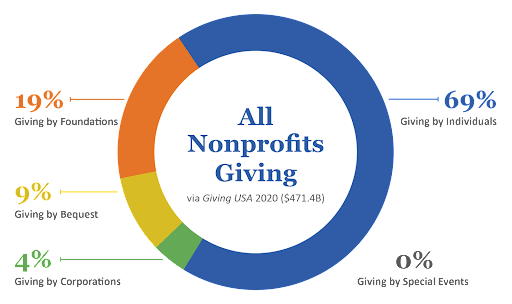Leading Nonprofit Company: Aiding Charities and Organizations Achieve Their Objectives
Leading Nonprofit Company: Aiding Charities and Organizations Achieve Their Objectives
Blog Article
Exploring the Diverse Features and Duties of a Nonprofit Agency in Attending To Social Issues and Supporting Change
Nonprofit firms function as crucial representatives of adjustment within society, tackling a myriad of social problems with complex strategies. Their obligations prolong past plain solution provision; they participate in advocacy, resource mobilization, and neighborhood outreach, commonly working as a bridge in between marginalized populations and important services. By cultivating cooperations and using culturally pertinent approaches, these companies resolve the origin of social obstacles. Yet, the intricacies of their duties elevate crucial inquiries concerning performance and sustainability. What are the ramifications of these varied functions on long-lasting community impact?
Understanding Nonprofit Firm Duties
The effectiveness of not-for-profit companies pivots on a clear understanding of their diverse functions within society. Not-for-profit agencies commonly function as service carriers, delivering necessary programs and resources to underserved populations.
In addition, nonprofits play a necessary duty in advocacy, increasing recognition and influencing policy choices that affect their neighborhoods. By participating in research and public education, these companies aid shape public discourse and advertise educated decision-making - nonprofit agency. They likewise offer as platforms for volunteerism, mobilizing neighborhood members to add their time and abilities towards collective goals
In addition, not-for-profit agencies frequently serve as conveners, combining diverse stakeholders to promote partnership and collective effect. This collective method improves their capacity to deal with complex social issues efficiently. Comprehending these complex functions is vital for making the most of the potential of nonprofit firms in developing lasting social modification and enhancing overall community health.
Area Interaction and Outreach
Efficient community engagement and outreach are basic elements of nonprofit agencies' approaches to build and cultivate connections trust within the areas they offer. These efforts concentrate on recognizing neighborhood needs, advertising understanding of offered resources, and encouraging engagement in programs developed to address social concerns. Nonprofit companies utilize a variety of techniques to engage with area members, such as workshops, educational sessions, and collective occasions.
Outreach efforts offer to enhance partnerships with diverse populaces, especially marginalized teams who may deal with barriers to gain access to. By making use of culturally appropriate interaction methods and leveraging local partnerships, nonprofits can boost their presence and show their commitment to area empowerment. This approach not just grows a sense of belonging however also boosts the likelihood of sustained involvement.
Moreover, efficient area engagement goes past plain involvement; it entails actively listening to neighborhood participants' feedback and integrating their understandings right into program advancement. This collaborative process makes certain that the services provided are responsive, pertinent, and tailored to the unique obstacles faced by the community. Eventually, promoting solid links via engagement and outreach can result in more impactful interventions and a higher cumulative effort toward advertising favorable social change.
Campaigning For and Plan Influence
Advocacy works as a critical device for not-for-profit firms to affect public policy and drive systemic change. By leveraging their know-how and area understandings, these companies can properly stand for marginalized populaces and address pushing social problems. Nonprofits take part in advocacy with various techniques, including public awareness campaigns, grassroots mobilization, union structure, and straight lobbying of policymakers.
With these efforts, not-for-profit agencies intend to form regulations and policy frameworks that align with their goal and the demands of the areas they serve. They carry out research, gather information, and share engaging narratives to highlight the seriousness of particular problems, making sure that decision-makers are educated and encouraged to act. This procedure not only magnifies the voices of those influenced by social oppressions yet also fosters an extra comprehensive and equitable policymaking setting.
In addition, campaigning for initiatives typically seek to create long-term architectural modifications, dealing with source as opposed to just alleviating signs and symptoms. By focusing on plan impact, nonprofit firms add to a wider understanding of social difficulties and advertise options that can result in sustainable renovations in social health. Eventually, campaigning for is essential to the transformative duty nonprofits play in producing a simply and equitable culture.
Fundraising and Resource Administration
Nonprofit companies rely on durable fundraising and resource administration strategies to sustain their advocacy initiatives and sustain their objectives. Reliable fundraising is necessary view it now for guaranteeing the schedule of financial resources required to implement programs and activities that resolve pressing social problems. This procedure often includes diversifying revenue streams through grants, individual donations, business sponsorships, and fundraising events. By using a multi-faceted technique, nonprofits can reduce the risks connected with dependence on a single financing resource.
Resource management is similarly important, as it entails the strategic allotment of both monetary and human sources to make best use of impact. Nonprofits need to establish budgets that straighten with their objectives while ensuring openness and accountability to stakeholders. This entails routine tracking of expenditures and adjusting approaches as needed to optimize resource usage.

Partnership and Collaborations
While several organizations seek their goals separately, cooperation and partnerships can considerably enhance the effectiveness of not-for-profit firms. By interacting with various other nonprofits, federal government entities, and economic sector organizations, nonprofits can pool resources, share expertise, and amplify their impact on social problems. Collective efforts usually cause innovative solutions that may not be attainable individually, leveraging the staminas of each partner to attend to complicated challenges.

Ultimately, reliable collaboration needs clear interaction, shared goals, and mutual respect among partners. By embracing a cooperative strategy, not-for-profit agencies can develop sustainable networks that not just address instant social issues however likewise add to long-term systemic modification, promoting a much more fair culture. Via partnership, nonprofits can thrive and maximize their potential for significant impact.
Final Thought
Not-for-profit agencies offer as important entities in addressing social problems and cultivating change within neighborhoods. Inevitably, the complex roles of nonprofit companies dramatically contribute to the quest of social justice and the enhancement of area health.
Understanding these diverse functions is essential for taking full advantage of the possibility of not-for-profit agencies in creating sustainable social modification and enhancing total area well-being.
Effective community engagement and outreach are essential components of nonprofit agencies' strategies to build and promote connections depend on within the neighborhoods they offer. By working together with various other nonprofits, government entities, and private sector companies, nonprofits can merge sources, share competence, and enhance their effect on social problems.Nonprofit agencies offer as critical entities in promoting and dealing with social issues change within communities - nonprofit agency. Inevitably, the complex roles of not-for-profit firms substantially contribute to the pursuit of social justice and the renovation of neighborhood wellness
Report this page